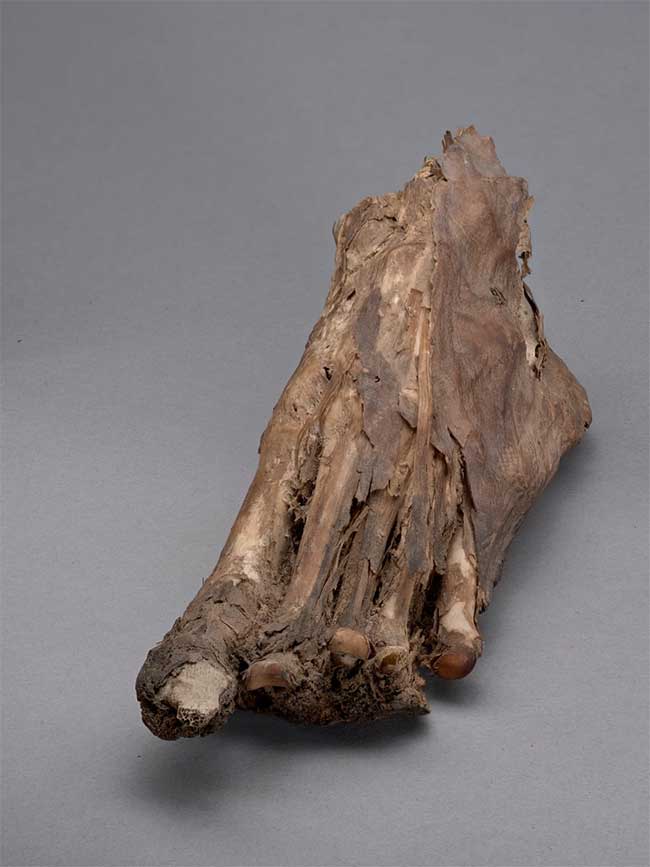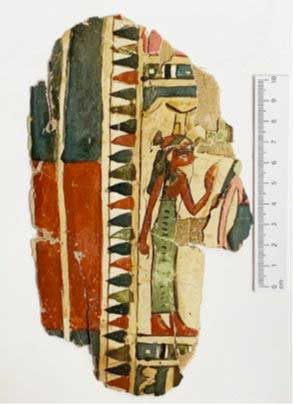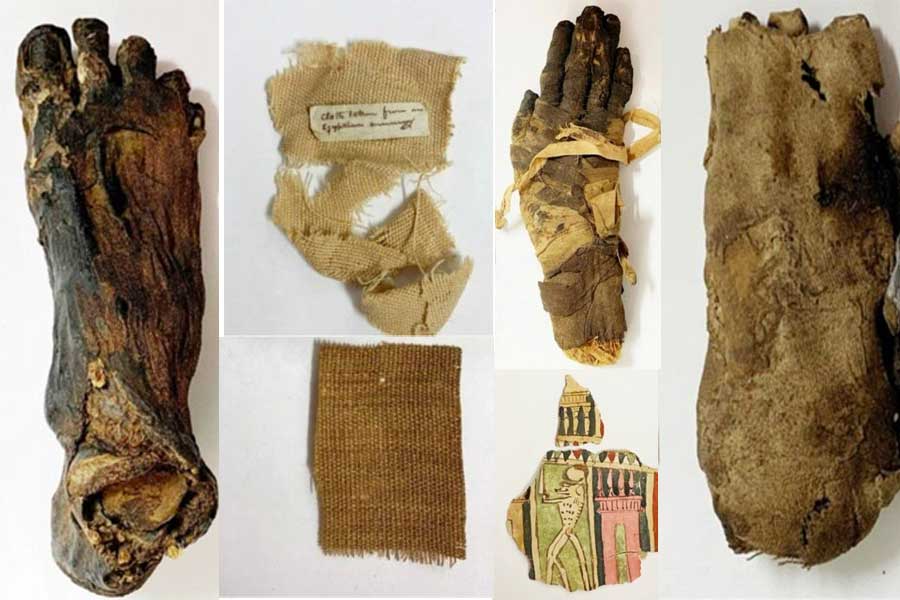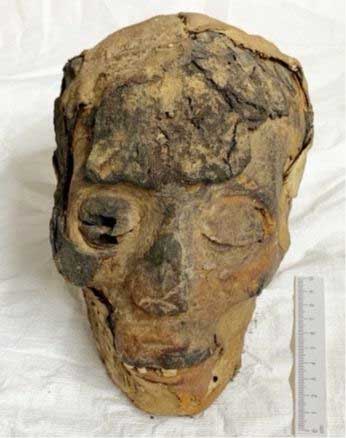Who Is the Mystery Mummy of Tomb KV55? (4 Theories)
A lone mummy, a ruined tomb, and a mystery that has plagued Egyptologists for 120 years: who was buried in KV55?

On January 6th, 1907, a team working under the American archaeologist Theodore Davis uncovered the entrance to a tomb in the Valley of the Kings. This tomb, designated as KV55, paled in comparison to the impressive tombs elsewhere in the Valley. It was a humble construction with just one chamber and no decorations, and many of the artifacts that remained inside were badly damaged.
This damage was ancient. Where the figures of a man once stood, someone had carved him out long ago. Where a name had once been written, someone had hacked it away. A lone coffin occupied the tomb, but someone had savagely ripped its golden face off. Inside that coffin lay the body of an individual whose identity has puzzled Egyptologists for almost 120 years. Who was laid to rest in KV55, and why were they treated with such contempt by the ancients who should have revered everyone buried in the sacred valley?
What Was Discovered Inside Tomb KV55?

Davis' initial excavation of the tomb was shoddy and irresponsible. He failed to adequately catalog everything in the burial, and his eagerness to inspect the discoveries caused damage that has handicapped scholars ever since.
However, his team quickly realized that they were dealing with a burial from the Amarna Period of Egypt's 18th Dynasty. This period describes the religious heresy of Akhenaten who famously overthrew Egypt's polytheism in favor of the worship of the solar deity Aten. These changes were reversed under his son Tutankhamun and later, the entire period was erased from official Egyptian history.
Get the latest articles delivered to your inbox
Sign up to our Free Weekly NewsletterSeveral wooden panels from the burial shrine of Queen Tiye attested to the proper dating. Tiye was the Great Royal Wife of Amenhotep III, the mother of Akhenaten, and the grandmother of Tutankhamun. The panels showed the distinctive Amarna art style with elongated skulls and exaggerated proportions. However, they had been damaged: all images of Akhenaten on his mother's shrine had been defaced.
Several smaller artifacts like jewelry and vessels variously bore the names of Tiye, Amenhotep III, and their daughter Sitamun. Seal impressions bearing the royal name of Tutankhamun were also discovered.
A set of canopic jars showing the face of a young royal woman are now accepted as belonging to Kiya, one of Akhenaten's secondary wives, further confirming the Amarna period connection. The excavators also found four magical bricks inscribed with the throne name of Akhenaten.

By far the most important discovery was a coffin. The coffin's golden face had been torn off and the cartouches that had once held a name had been scratched out. Inside, a mummy lay with a single vulture pectoral, but no other signs of who they were. Unfortunately, Davis' poor methods caused irreparable damage to the mummy. Rough handling and poor preservation destroyed everything except the bones.
The nearby tomb of Ramesses IX provided the most likely explanation for the damage. The entrance to that tomb ran directly over KV55 and it is thought that the workers accidentally breached KV55 during their work. Centuries had passed by the time of Ramesses IX, but the symbols of the Amarna period were still treated with contempt. It was probably these workers who desecrated the burial and did their utmost to make it impossible for anyone to recognize who had been laid to rest in KV55.
These were the puzzle pieces that scholars have used to try to decipher the identity of KV55's inhabitant.
Theory 1: Queen Tiye

An obvious candidate for the tomb's ownership was Queen Tiye.
Tiye's name was the most common one among the burial goods and the presence of her burial shrine all but confirmed that Tiye's body had been in the tomb — at least, at some point.
After a cursory inspection of the body, Davis' team concluded that the mummy was a female. That was enough for Davis. In 1910, he published his findings from the tomb in the book Tomb of Queen Tiyi and considered the matter settled.
The truth was not so simple. In 1898, another tomb, KV35, was uncovered that served as a cache for over a dozen royal mummies from this period. Among them was one dubbed the KV35 Elder Lady. Since Amenhotep III was also present in the tomb, it had been suggested that the Elder Lady was in fact Queen Tiye.
The identification of the Elder Lady as Tiye was supported by the discovery of the tomb of her grandson, Tutankhamun, in 1922. A lock of hair marked as belonging to Tiye bore a strong resemblance to the remarkably well-preserved hair of the Elder Lady. Later scientific studies suggested that the hair was an exact match. Further DNA studies in 2010 claimed the Elder Lady had all the relevant genetic links to confirm her as Queen Tiye. She was not the mummy in KV55.
That still leaves the question of how Tiye's shrine ended up in KV55 though. It is now believed that Tiye was buried in KV55 for a time alongside the unidentified mummy. Tiye probably died in Amarna during her son's reign but was moved after the city was abandoned. Her body was moved again when KV55 was opened during Ramesses IX's reign, and probably moved yet again to where it was discovered in KV35.
Although not all Egyptologists agree that Tiye is the Elder Lady, no serious Egyptologist still believes she is KV55's mummy either.
If not Tiye, then who is it?
Theory 2: Kiya

Another probable candidate was Kiya.
Kiya was a secondary wife of Akhenaten who appeared in many depictions at Amarna. She faded from the record — or was perhaps erased — towards the end of Akhenaten's reign.
Scholars have concluded that canopic jars showing the head of a woman are almost certainly a representation of Queen Kiya, sharing her distinctive hairstyle and showing similar features to other depictions of her. The Kiya identification is supported by the coffin itself. Most scholars agree that the coffin was originally made for Kiya and displays features consistent with other depictions of her.
If the coffin and the jars show Kiya, then surely it must be her in there? Yet again, the evidence defies the obvious explanation.
While the coffin might originally have belonged to Kiya, it shows signs of modification like a false beard and room for a crook and flail that were clearly later additions. These features were exclusive to the coffins of Pharaohs and would never have been used on a final burial for Kiya. Additionally, the erasure of Kiya from artwork in Amarna toward the end of Akhenaten's reign suggests that she fell from grace before her death and would not have been given an honored burial, which could explain why Kiya's burial goods were available to use when the actual occupant died.
The nail in the coffin to any Kiya or Tiye theory was something even more simple: upon closer inspection, the remains were in fact male. Davis and his team's initial observations were wrong. Multiple subsequent investigations have unanimously agreed that whoever was buried in KV55 was a man.
It could not be Kiya or Tiye, but confirmation that this was a male led to the most exciting possibility of all.
Theory 3: Akhenaten

Is KV55's mummy actually Akhenaten?
Akhenaten is the most obvious candidate for a lot of reasons. Akhenaten is the defining figure of the Amarna period and a conspicuous absence from the list of confirmed mummies. Magic bricks bearing his name were also found inside the tomb. References to his mother, father, his wife, and his son would all make sense inside his tomb.
If KV55 is Akhenaten, it would also explain the desecration. Egypt's heretic Pharaoh was despised after his death and later Pharaohs tried to erase all traces of him. As the desecrated tomb of Ay in WV23 shows, the erasure of the Amarna period could absolutely include the desecration of burials and the destruction of the hated target's image.
The destruction of the cartouches on the coffin, the obliteration of Akhenaten's images on Tiye's shrine panels, and even the desecration of the coffin's golden face are all consistent with how Akhenaten was treated everywhere else they found his image.

Akhenaten certainly died at Amarna. However, like Tiye, it's probable that his body was moved back to Thebes by Tutankhamun when the young Pharaoh abandoned his father's capital. This theory posits that Tutankhamun deposited his father in KV55 where he was later discovered and desecrated by the workmen of Ramesses IX.
If the body is Akhenaten's, why is it in a coffin designed for Kiya? It's possible that Akhenaten was originally buried in a different coffin but was placed in Kiya's when leaving Amarna. It's also possible that Akhenaten was originally buried in this repurposed coffin for one reason or another. It was not uncommon for Pharaohs not to have their burial goods ready – even some of Tutankhamun's burial goods were not originally made for him – so such a co-optation is hardly unheard of.
However, there is another mysterious and frustrating candidate for the identity of the KV55 mummy.
Theory 4: Smenkhkare

Candidate four is one of the most ephemeral figures in Egyptology: Smenkhkare.
Appearing in a handful of inscriptions and paintings at Amarna, Smenkhkare emerged as either a co-regent to Akhenaten late in his reign or as his immediate successor. We know that he married Akhenaten and Nefertiti's eldest daughter Meritaten, but practically nothing else is known about him. Various theories have been put forward about his origins: that he was Akhenaten's son, younger brother, nephew, an unconnected noble, or even a Hittite prince, but the truth still escapes us.
Smenkhkare's reign or co-reign lasted little more than a year. His tomb and mummy are unknown, which makes him a potential candidate for KV55.
No artifacts in the tomb reference Smenkhkare. However, the mismatch of goods from different people could indicate that the burial was hastily thrown together when young Smenkhkare died so early in his reign.
Supporters of the Smenkhkare co-regency theory, like Aidan Dodson place the co-regency in years 13 or 14 of Akhenaten, which is around the time that Kiya fell from grace. Could the recently disgraced royal wife's burial goods be quickly retooled to serve the unexpected death of the co-regent? It's a plausible hypothesis.
Smenkhkare vs Akhenaten: Age

Smenkhkare and Akhenaten are both viable candidates, but attempts to settle on one or the other have been hamstrung by furious debate and contradictory claims by scholars studying the remains.
The age of the deceased has been a focal point of disagreement. Akhenaten would have been at least 30 years old when he died, given that he already had at least one daughter within the first year of his 17-year reign. Smenkhkare, on the other hand, must have been younger than that, and most Egyptologists believe he would have been in his late teens or early 20s when he died.
The initial 1908 examination in Cairo concluded that the remains belonged to a man no older than 25 or 26. Several subsequent studies corroborated this early 20s age estimate, suggesting that the remains were more likely to be of Smenkhkare than Akhenaten. However, a 1988 study used radiological dating to assert that the body was of a man in his mid-30s, favoring an Akhenaten interpretation.

An influential study by a team led by Dr. Zahi Hawass and published in 2010 also supported an age between 35 and 45 based on spinal degeneration. This 2010 study was widely reported in the media but was fiercely criticized by many Egyptologists. The fact that Hawass et al. cited only one indicator for this higher age estimate was not a strong basis to refute multiple studies arguing for a younger age. In direct response to the Hawass paper, anthropologist Eugen Strouhal undertook a comprehensive study of the remains and concluded that the man was no older than 22 when he died.
Doubts have been raised over any effort to estimate the age of death for human remains, especially given the poor state of the KV55 remains. Additionally, Akhenaten and Smenkhkare have been theorized to have had a range of health issues such as Frohlich's Syndrome which could affect skeletal maturation and distort the actual age.
Nevertheless, most of the studies favor an early 20s age of death and Strouhal's thorough examination of the remains is a persuasive argument for the younger aging.
Smenkhkare vs Akhenaten: DNA
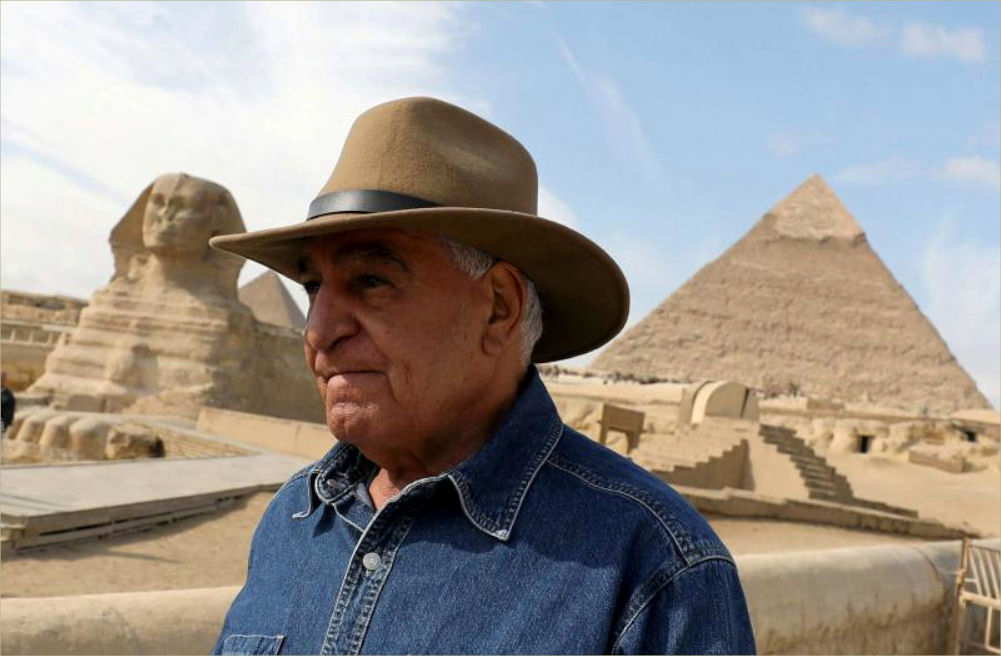
Scientific agreements do not end with KV55's age, however.
Hawass' 2010 study was primarily a DNA study that attempted to reconstruct the family tree of the late 18th dynasty royal family, including KV55. Hawass' study confirmed many of the DNA relationships that Egyptologists had long hypothesized, such as the identification of KV35's Younger Lady as Queen Tiye.
KV55's results were especially intriguing. Hawass' team concluded that the KV55 mummy was the biological son of Amenhotep III and Queen Tiye — aligning with Akhenaten and some Smenkhkare theories — but also that KV55 was the father of Tutankhamun. Scholarship has long accepted that Akhenaten was Tut's father, so Hawass concluded that KV55 must be Akhenaten. The global media confidently reported that the mystery of KV55 and Tut's parents had finally been solved.
As with so many things in Egyptology, the response from other academics was mixed. Fundamental questions about the reliability of DNA for remains of this age have also plagued the results. Some scholars argue that DNA would be too degraded to give a reliable answer and that all conclusions based on it are tenuous at best. The raw data for the DNA study was not released so it could not be properly reviewed or challenged by other scholars. Scholars like Aidan Dodson pointed out that genetic similarities could be interpreted in many ways, doubly so since incest was a well-recorded aspects of 18th dynasty royal lineages. The parentage of Tut and identity of KV55 of Akhenaten have thus been called into serious question.
Other Egytpologists accept the DNA results but argue that KV55 still is not Akhenaten. While Akhenaten is the most likely candidate for being Tut's father, it is not impossible that Smenkhkare was Tut's father. Tarek Tawfik, Susanna Thomas and Ina Hegenbarth-Reichardt argued as much in a 2018 paper where they theorized that Smenkhkare and Meritaten were in fact Tut's parents. While most Egyptologists are firmly in the Akhenaten parentage camp, no sources unambiguously show that Akhenaten was Tut's father and this has only ever been inferred from the evidence. One description of Tut during his days at Amarna refers to him as 'King's Son of his body' but does not specify which king. Smenkhkare could well be Tut's father and the KV55 mummy as well.
The Story of KV55

The story of KV55 appears to have been this: Akhenaten or Smenkhkare died in Amarna and was interred at the royal tomb there, alongside the recently-deceased Queen Tiye. Later during the reign of Tutankhamun, the young king transferred his family's bodies to KV55 after he abandoned Amarna.
Tiye and the KV55 mummy sat in the tomb for some time until workers, probably those constructing the tomb of Ramesses IX, accidentally stumbled across the tomb centuries later. These workers recognized the symbols and names of the Amarna period and destroyed them. They tore the golden face from the coffin, scratched out the names of its owner, and hacked out Akhenaten's figure from his mother's burial shrine. By erasing these images and names, the deceased couldn't be recognized in the afterlife. In effect, it was a second death.
Tiye was not held in contempt. She was moved out of the defiling presence of the Amarna pharaoh — although her shrine was left behind — and was probably placed in her husband's tomb for a time before being moved to KV35 during a later reorganization of the Valley. Meanwhile, the desecrated burial of KV55's mummy was sealed away and forgotten for 3,000 years until Davis and his team uncovered it.
Who Is the Mummy of KV55? The Final Verdict

We simply do not know for certain who was laid to rest in KV55. However, we can be confident that it was either Akhenaten or Smenkhkare.
This author is inclined to accept the Smenkhkare identification. Multiple studies have coalesced around an age too young for Akhenaten, and the genetic similarities between Tut and KV55 could conceivably be from other familial relationships that allow for Smenkhkare as surely as they allow for Akhenaten. The presence of artifacts referencing Akhenaten should not be taken as definitive proof of the mummy's identity any more than the more numerous artifacts referencing Kiya or others mentioning Tiye. Until and unless other evidence emerges, the case for Smenkhkare appears to be stronger.
That being said, it is difficult to think of what evidence could emerge to settle the debate once and for all, save perhaps for the discovery of an untouched tomb belonging to either man. Like many debates in Egyptology, we may have to accept that a question mark will always hang over the identity of the man who came to rest in this tiny rock-cut tomb.
-- Sent from my Linux system.


